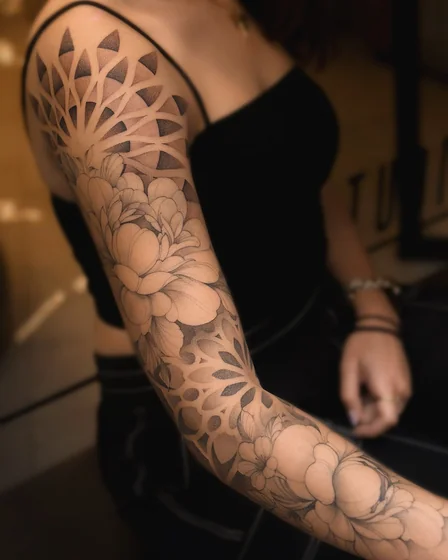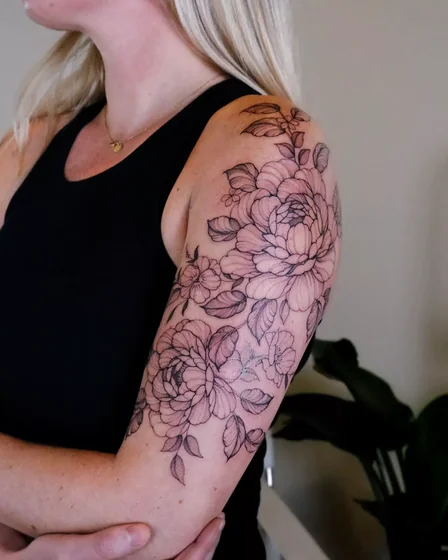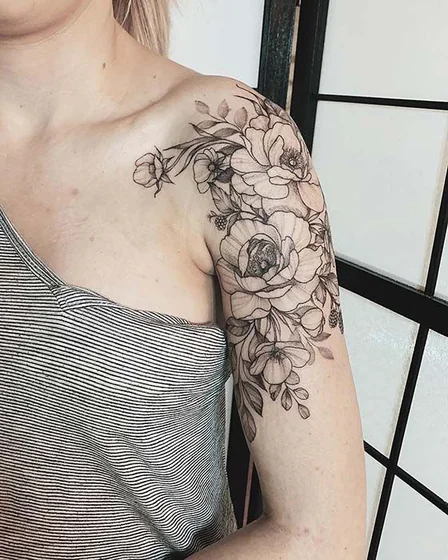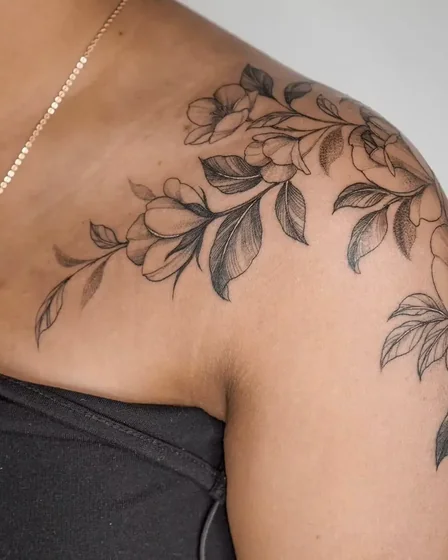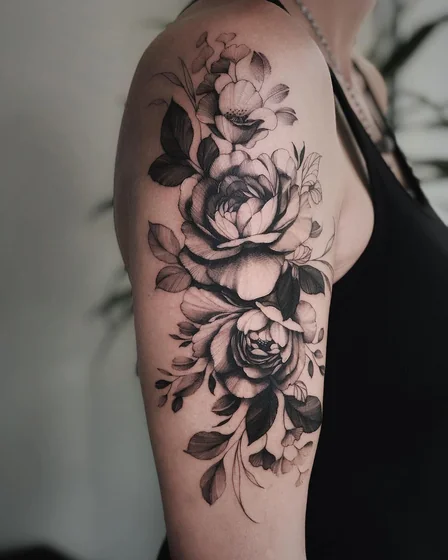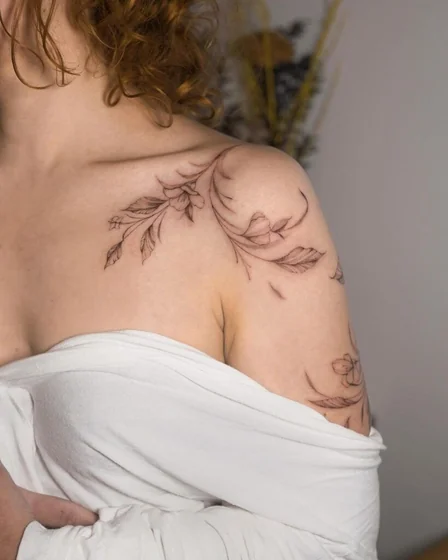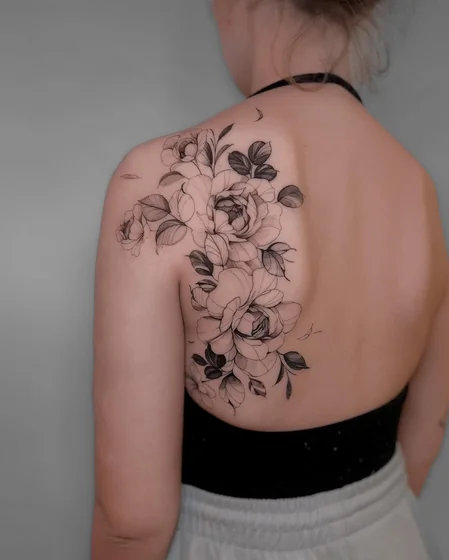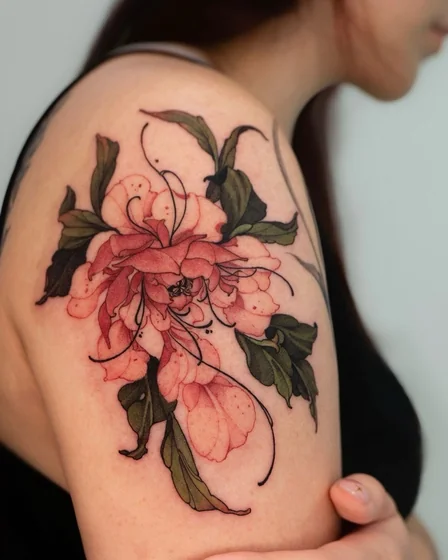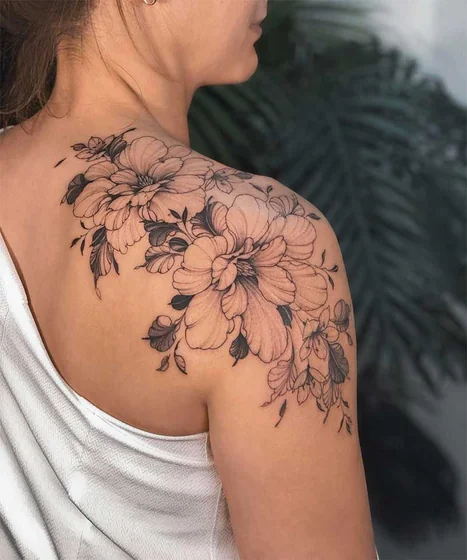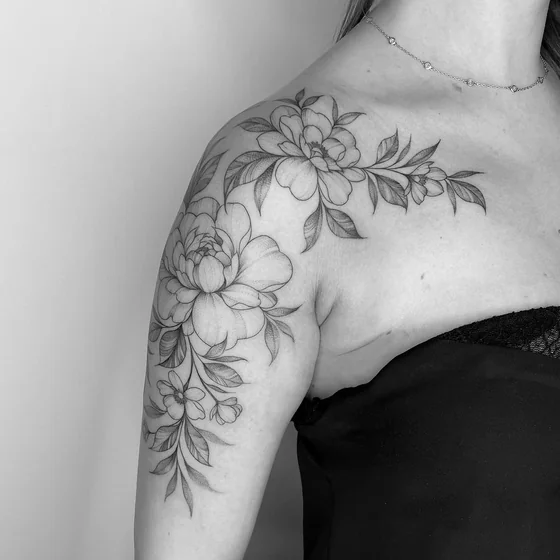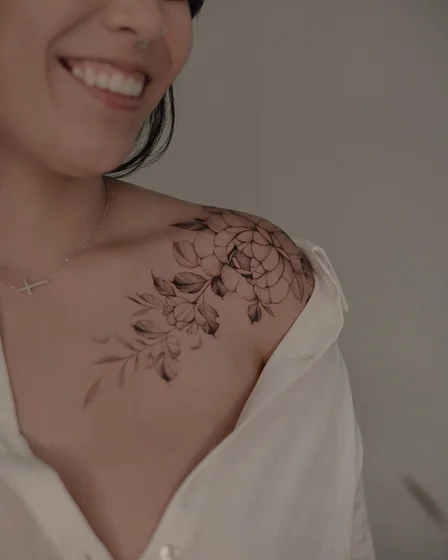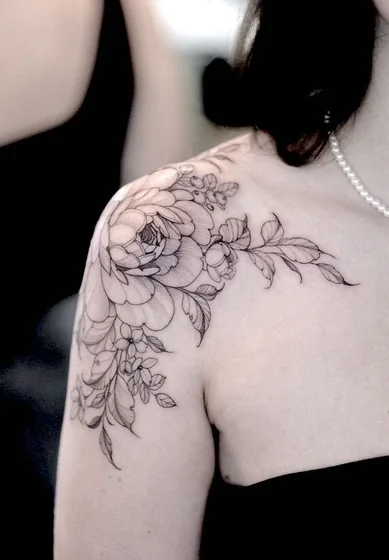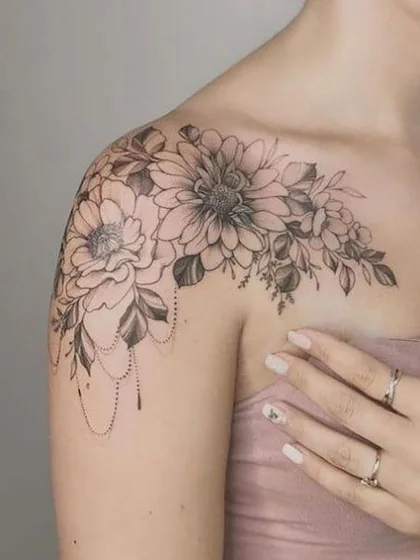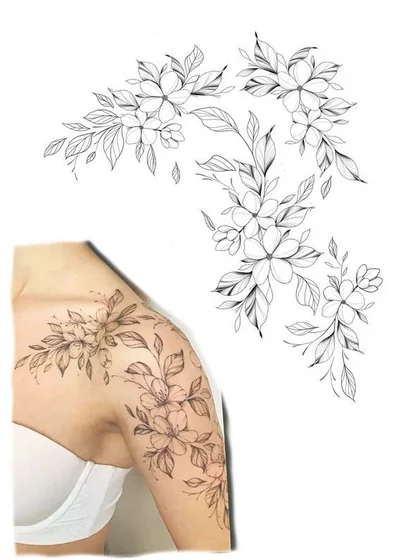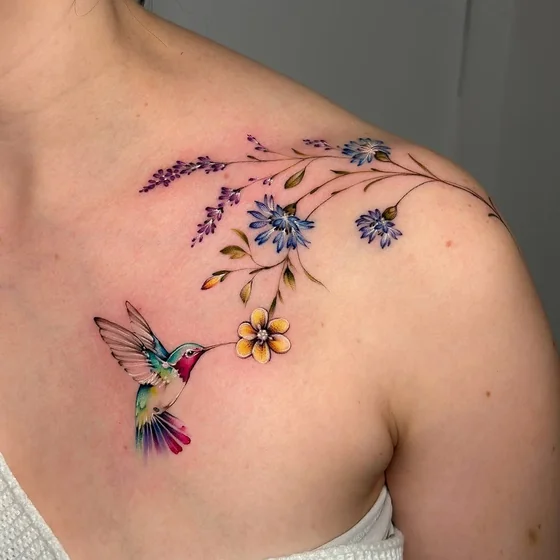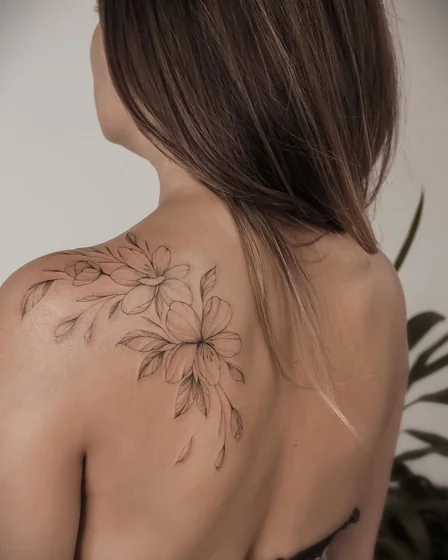Filters
Tattoo Ideas
3D Virtual Try-On
Stop guessing. See exactly how your tattoo will look on your body. Upload your design, and visualize it instantly.
- Realistic 3D skin simulation
- Multiple body positions
- Upload your own design
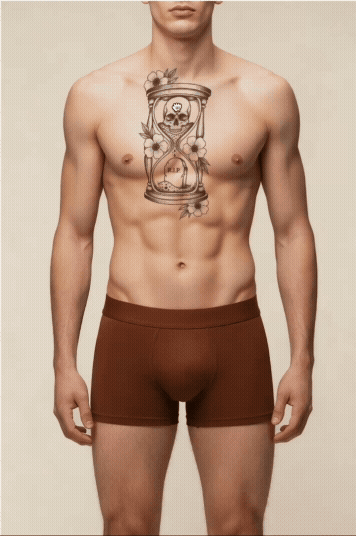
Why the Shoulder Perfectly Suits Feminine Expression
Shoulder tattoos for women represent the ideal balance between professional concealment and physical assertion. This placement offers a versatile canvas that transforms from a sophisticated accessory in off-shoulder gowns to a private personal token under professional attire. The shoulder's natural curve creates an organic foundation that feminine designs—particularly florals, celestial elements, and flowing organic patterns—embrace beautifully. Rather than fighting against anatomy like geometric styles often do, these motifs follow the body's graceful lines, creating movement that feels alive rather than static.
Design Philosophies That Enhance Natural Curves
To maximize the aesthetic appeal of shoulder tattoos for females, successful designs must work with the body's existing geometry rather than competing against it. Consider these three distinct structural approaches:
- The Cascading Garden: This method positions a focal flower or botanical cluster on the shoulder cap, extending delicate stems or vines down the shoulder blade. Peonies, roses, and cherry blossoms work exceptionally well here, as their layered petals provide built-in dimension that mimics the roundness of the shoulder.
- The Celestial Flow: By using the shoulder cap as a centerpiece (representing the sun or moon), stars and constellations can radiate outward across the collarbone and upper arm. This circular flow complements the joint's natural rotation without forcing rigid straight lines onto a curved surface.
- Delicate Mandalas: Ideally suited for women with defined shoulders, this approach treats the shoulder cap as a decorative medallion. The symmetry creates visual satisfaction while maintaining a contained scale (typically 3-5 inches) that feels intimate and jewelry-like.
Strategic Placement for Style Personalities
Your personal aesthetic should drive the placement strategy just as much as the design itself. Different "flows" communicate different energies:
- Romantic & Bohemian: Opt for Shoulder-to-Back flows. Position the primary element on the cap and let details cascade toward the mid-back. This maximizes the "reveal" moment in backless dresses.
- Modern Minimalist: Choose Contained Cap placements. A single fine-line motif or botanical illustration that stands alone without extensions delivers sophistication. This is the safest choice for strict corporate environments.
- Bold Feminine Energy: Embrace Shoulder-to-Arm extensions (Half-Sleeve effect). Starting with a substantial cap piece that flows down toward the elbow balances femininity with undeniable presence.
Body Type Considerations for Visual Harmony
- Broader Shoulders: You have the canvas for elaborate, multi-element scenes. Detailed shading and complex arrangements maintain balance without looking cluttered.
- Petite/Narrow Frames: Focus on vertical emphasis. Designs that flow down the shoulder blade create elegant length. Avoid "busy" designs; clean linework and negative space read more elegantly on smaller frames.
- Fitness Changes: If you are actively building muscle, wait until you reach your maintenance physique. While moderate toning is fine, significant deltoid growth can warp the placement of geometric or portrait work.
Feminine Motifs With Lasting Resonance
- Floral Symbolism: Avoid generic flash. Choose Peonies for prosperity, Lotus for spiritual awakening, or Wildflowers for independence.
- Fauna & Flight: Birds and butterflies should be positioned with wings extended across the collarbone to simulate flight, utilizing the body's width for dynamic movement.
- Script Limitations: The shoulder is a high-motion, curved zone. Keep text under 5 words and position it on the flatter upper back or collarbone area to prevent distortion.
Watercolor Techniques: Aesthetics vs. Longevity
Watercolor shoulder pieces offer a dreamy, painterly look but require realistic expectations regarding maintenance.
- The Reality: True watercolor (no outline) fades significantly faster than blackwork, often losing definition within 3-5 years.
- The Solution: Request a "Watercolor Hybrid" technique. This uses fine-line traditional outlines to contain the color, ensuring the structure remains legible even as the soft shading fades over time.
Pain Expectations and Healing Realities
- Pain Scale: 3-4/10 (General Shoulder Cap). The muscle provides a natural cushion.
- High Sensitivity Zones: 6-7/10 near the Collarbone (thin skin over bone) and Shoulder Blade (intense vibration).
- Healing Timeline: 2-3 weeks for surface healing; 3 months for deep settling.
- Wardrobe Warning: Bra straps are the enemy of fresh shoulder ink. Plan to wear strapless bras or loose clothing for the first 14 days to prevent friction damage.
Alternative Masculine Approaches
While feminine shoulder work emphasizes grace and flow, masculine designs often utilize the same placement to emphasize width and armor-like toughness. Comparing these aesthetic choices can help clarify your own preferences—explore these for men compositions to see how identical placement yields different visual results.
Investment Guidelines (2025-2026 Rates)
- Small/Minimalist (2-4 inches): $150 - $400 (Shop Minimum to 2 hours).
- Detailed Shoulder Cap (4-6 inches): $400 - $900 (Single Session).
- Extended Composition (Shoulder-to-Back/Arm): $1,000 - $2,500+ (Multi-session).
Note: Complex watercolor or realism styles will be at the higher end of these ranges due to the technical skill required.
Explore More Styles
- Floral Tattoos for Women: Discover botanical designs that perfectly complement shoulder placement.
- Watercolor Tattoos for Women: Explore dreamy, painterly techniques for a softer aesthetic.
- Tattoo Meanings: Deepen the significance of your shoulder piece with symbolic research.
- Tattoo Design Collection: Browse our full library for broader inspiration.
- Tattoo 3D Try-on: Visualize how different placements look on your actual body before committing.
- Best Tattoo Design Agent: Generate custom concepts tailored to your shoulder's unique contours.
